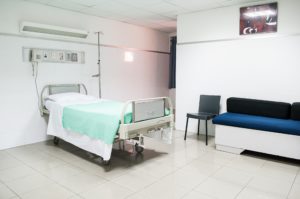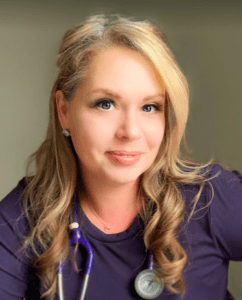According to the Agency for Healthcare Research and Quality, nearly 2.5 million Americans are affected by hospital-acquired pressure ulcers each year. What is more concerning is that about 60,000 patients die annually as a direct result of a pressure injury. Pressure injuries are costly, painful, and dangerous. Those that develop while in the hospital may require special care when returning home.

A hospital-acquired pressure injury is a skin injury or bedsore that occurs during a patient’s hospital or nursing facility stay. It is a pressure injury that is caused by a breakdown of the skin or underlying tissue. Pressure injuries may occur due to several factors, including:
While recovering in the hospital, you may get pressure sores from lying or staying in one position for a long time, especially over bony prominences.
Common pressure sore locations include:
Pressure injuries and skin tears take a long time to heal. Thus, having a wound or pressure injury wound may prolong a hospital stay. Pressure injuries may become severe and cause infections or permanent muscle or bone loss.
When it is time to return home from the hospital, you may still have open areas or ulcers.
Here’s what to keep in mind when it comes to caring for your hospital-acquired pressure injuries at home.
If you have an open wound but are unsure if it is a true hospital-acquired pressure injury, you must still take measures to help the skin heal and prevent further problems.
To care for broken skin or wounds at home, you should:
While many injuries heal on their own with time, you should call your doctor if the area looks worse or if it doesn’t heal in 7-10 days.
You should also call your doctor immediately to have a look at your wound if you notice these signs of infection:
Patients or caregivers must give special care to skin ulcers and hospital acquired pressure injuries to prevent complications.
If you need to talk with one of our expert doctors or you want to learn more about virtual services, contact us now to find out about how to book a free or low-cost appointment. My Virtual Physician offers video consultations for pressure injuries and other wounds.
Disclaimer: The contents of this article are for informational purposes only and do not constitute medical advice. The information, graphics, and images on this site are not intended to substitute diagnosis or treatment by a medical professional. Always seek the advice of a licensed physician for any questions you may have regarding a specific condition.
"Bedsores (pressure ulcers)". mayoclinic.org. Accessed July 20, 2022.
"Dressing interventions to heal pressure ulcers". ncbi.nlm.nih.gov. Accessed July 20, 2022.
"Pressure Ulcers". aafp.org. Accessed July 20, 2022.
"Preventing Pressure Ulcers in Hospitals". ahrq.gov. Accessed July 20, 2022.
 Sarah Falcone, BSN, RN, WCN-C, CSWD-C, is a certified wound care nurse, nursing consultant, and health content writer in Fort Worth, TX. She works with clients in home health, wound care, and telemedicine. Sarah is a passionate advocate for moving advanced levels of care to the home, where her clients can safely receive the medical treatments they need with greater satisfaction and comfort. She focuses on patient experience, outcomes, and advancing clinical models using innovative technology to serve patients better. Sarah draws from 15 years of practicing patient care and nursing leadership to share her own nursing experiences and expertise online. Connect with her on LinkedIn!
Sarah Falcone, BSN, RN, WCN-C, CSWD-C, is a certified wound care nurse, nursing consultant, and health content writer in Fort Worth, TX. She works with clients in home health, wound care, and telemedicine. Sarah is a passionate advocate for moving advanced levels of care to the home, where her clients can safely receive the medical treatments they need with greater satisfaction and comfort. She focuses on patient experience, outcomes, and advancing clinical models using innovative technology to serve patients better. Sarah draws from 15 years of practicing patient care and nursing leadership to share her own nursing experiences and expertise online. Connect with her on LinkedIn!